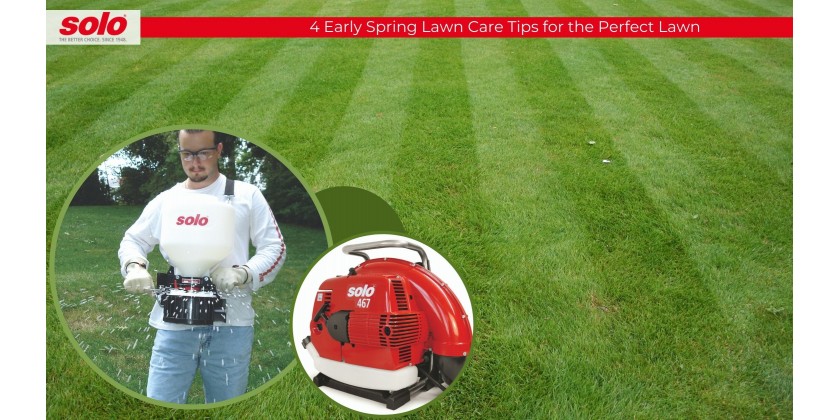
The time is here: spring. For the lawn care enthusiast, spring means it’s time to swing into the lawn care season and nurture a lush green lawn. What you do in early spring impacts your lawn for the rest of the year. Temperature and weather play a huge role in how you start your spring lawn care.
The regional differences come down to grass. A northern lawn with cool-season grass has different needs in March than a southern lawn with warm-season grass. Many early spring lawn care tasks are still the same but at different times. Here are a few things you can do to get your lawn in early spring for a healthy lawn all year:
Clean Your Yard
The first thing to do in early spring is clean your yard. Your lawn doesn’t get much attention in the winter, meaning debris and leaves pile up.
Clean up leaves, pick up branches and twigs, and rake your lawn to remove thatch. Taking the time to clean your yard also allows you to find any weak spots that may have developed over the winter. An air blower can help you clean your yard faster.
Test Your Soil
Fertilizing your lawn is a top priority in the spring season, but are giving your lawn the right nutrients? A soil test will help you find out the nitrogen, potassium, phosphorus, and pH levels of your soil. Knowing these levels will help you determine what your lawn needs for optimal growth. For example, most lawns have an ideal pH of about 6.5. Anything lower or higher than 6.5 might require you to apply lime to achieve the ideal 6.5 pH.
If your lawn lacks key nutrients, it will show, but you won’t know until you do a soil test. The consensus is to test your soil about every three years. If you are overdue for a soil test, early spring is an ideal time to test your soil. You can find soil tests at your local garden store or cooperative extension. Once you receive your results, you can plan your lawn care tasks accordingly.
Stop Weeds from Germinating with Pre-Emergent Herbicides
The next early spring lawn care task you can do is apply a pre-emergent herbicide. A pre-emergent herbicide targets weeds before the germination stage and is a preventative step in your overall weed control strategy. The best time to use a pre-emergent herbicide is when soil temperatures are around 55 degrees, making early spring an ideal time to apply a pre-emergent herbicide.
Fertilize
Early spring is a great time to fertilize your lawn. You’ll want to do a soil test before you fertilize, especially if you haven’t done one for a few years. A soil test will tell you what nutrients your soil needs.
Next, you’ll want to pick a fertilizer that fills in nutrient gaps. If your lawn is lacking nitrogen, you’ll want to use a fertilizer high in nitrogen. Be sure to read the instructions carefully to avoid over-fertilizing your lawn. This is an important step because you can over-fertilize and harm your turf. Depending on whether you use a liquid or granular fertilizer, you will need a sprayer or a spreader.
Consider Your Location and Grass Type
There aren’t always hard rules on when and how to do certain lawn care tasks. Location and grass type play a huge role in what you do to your lawn and when you do it. Before you do anything to your lawn, you should know your grass type and its specific needs.
Follow these four tips to help you get a lush lawn this spring.
